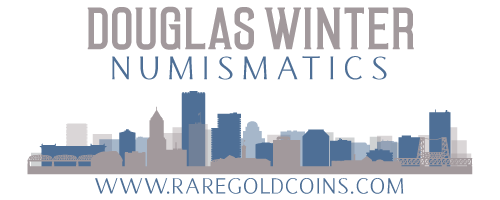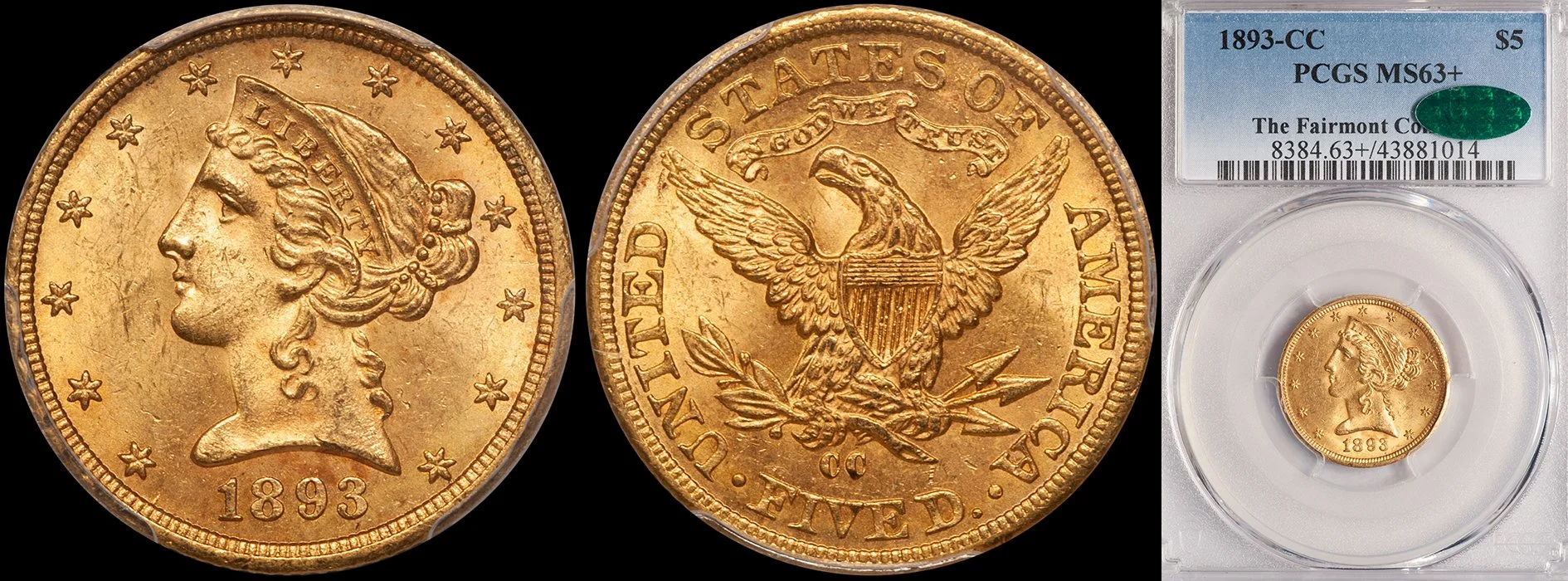Which New Orleans Gold Issues Are Really Rare?
/In 1992, my book "New Orleans Mint Gold Coins 1839-1909" was published. A decade later, the information in this reference is considerably out-of-date. Which gold issues from the New Orleans mint have remained rare and which are now more readily available? 1. Gold Dollars: The 1850-O is still the only gold dollar from this mint that can be called scarce in any grade. Properly graded Uncirculated pieces are quite rare, especially above Mint State-62. I have never seen a gem and only one or two at the Mint State-64 level. The 1849-O and 1851-O are more plentiful in the lower Mint State grades than I previously believed but are extremely rare in gem. The 1852-O remains reasonably scarce in the lower Mint State grades, quite rare in Mint State-63 and very rare above this. Price levels for the 1855-O have increased dramatically in the past decade. This issue cannot really be called rare but its status as the only Type Two gold dollar from New Orleans makes it extremely popular. The supply of high-grade examples (Mint State-62 and higher) has dried up in recent years.
2. Quarter Eagles: The only New Orleans quarter eagle that can rightfully be called rare in circulated grades is the 1845-O. It has proven to be almost impossible to find above About Uncirculated-55 and I still know of just two or three Uncirculated examples. The 1840-O, 1842-O and 1843-O Large Date quarter eagles are very hard to locate in the higher AU grades and all three are very rare in Uncirculated. The 1846-O, 1850-O, 1851-O and 1852-O have proven to be a little more available in Uncirculated than formerly believed but all four are extremely undervalued in comparison to Charlotte and Dahlonega quarter eagles of this era. The 1856-O is still the biggest "sleeper" date of the quarter eagles and I doubt if more than six or seven are known in Uncirculated. The 1854-O, while extremely common in circulated grades, is quite scarce in Mint State-62 and rare in Mint State-63 or better. It remains absurdly undervalued. The 1857-O is more plentiful in high grades than formerly believed but it remains very rare in Mint State-63 and above.
3. Three Dollar Gold Pieces: If one goes strictly by population figures from NGC and PCGS, it seems that the 1854-O Three Dollar gold piece is far more common than once believed in the higher About Uncirculated grades. This is not the case. Properly graded, sharply struck examples with original surfaces are very rare in Mint State and extremely scarce in About Uncirculated-55 and About Uncirculated-58. Many have been submitted to the grading services multiple times and a number I have seen in NGC AU-55 and AU-58 holders have been considerably overgraded.
4. Half Eagles: The 1842-O and the 1847-O half eagles are two of the rarest gold issues from this mint. There are two examples known of the former in Mint State and well under a dozen in properly graded About Uncirculated. The 1847-O remains unknown in Uncirculated and extremely rare in AU. Most of the coins in AU-50 to AU-55 holders are unattractive and considerably overgraded. The 1840-O is still an issue that has not really received its due in Uncirculated. A small group of 1843-O Small Letters (four pieces) was discovered in the late 1990's and these increased the number of high-grade examples known. The 1845-O, 1846-O and 1851-O are very rare in Uncirculated and very scarce in the higher AU grades. The 1854-O has become somewhat more available in high grades and I have seen at least six or seven different Mint State pieces over the last decade. The 1855-O, 1856-O and 1857-O are all very rare in Uncirculated and extremely scarce in the higher AU grades. The only readily obtainable No Motto issue is the 1844-O.
The three With Motto New Orleans half eagles have gained in popularity (and price) since my book was published. The 1892-O is far and away the scarcest of this trio and is still considerably undervalued in Mint State. The 1893-O and 1894-O have become far more available in the lower Uncirculated grades but are unquestionably rare in Mint State-63 and essentially unavailable any finer.
5. Eagles: With the exception of the 1847-O, every New Orleans eagle from the 1840's remains very scarce in the higher About Uncirculated grades and very rare in Uncirculated. There are still no Mint State examples of the 1841-O known while the 1849-O appears to be unique. The 1846-O is extremely rare in high grades with just two or three known in Mint State. Even issues such as the 1842-O, 1844-O and 1845-O, which are relatively easily to locate in lower grades, are very rare in properly graded AU-58 and extremely rare in Mint State.
A number of the issues from the 1850's have proven to be extremely rare in high grades. The 1859-O is a bit more available in lower grades than formerly believed but it is unknown above AU-55. The 1852-O, 1855-O, 1856-O and 1857-O are all very rare in the higher AU grades and all except for the 1855-O appear to be unknown in full Mint State.
The 1879-O eagle seems to be a bit less rare than its original mintage of 1,500 would suggest but the supply of higher grade (AU-50 and better) pieces has dried up in the past few years. Only a single Uncirculated example is known.
The 1883-O remains the rarest of the post-Civil War issues. It is rare in all grades and examples in AU-55 or higher are extremely rare. No strictly Uncirculated piece is known to me although one or two might exist. The 1880-O and 1881-O remain rare and underrated in Uncirculated grades while the 1882-O is slightly more available in higher grades than once believed.
The New Orleans eagles from the 1890's are far more available in the lower Uncirculated grades than they were a decade ago. This is due to a number of sizable hoards having been uncovered in the mid-1990's. However, all of these dates remain rare in Mint State-63 and very rare in Mint State-64 or above.
The eagles from the 1900's are among the most available gold issues from this mint in higher grade. They are very good value in the lower Uncirculated grades.
6. Double Eagles: As this article is being written (April 2003), double eagles have become the most popular issues from New Orleans. There is currently an unprecedented level of demand for these issues and the two classic rarities, the 1854-O and 1856-O, have seen incredible price increases in the past decade. The 1850-O was formerly a sleeper issue in high grades and was very undervalued. High-grade AU's now sell for $15,000-20,000. The 1851-O and 1852-O are a bit less rare in Uncirculated than formerly believed. Nice AU's are only moderately scarce but they have become hard to locate as a result of strong demand. The 1855-O, 1859-O and 1860-O remain very rare in AU-55, extremely rare in AU-58 and unobtainable in Uncirculated. The 1857-O and 1858-O are more available in the lower to middle AU grades than they were a decade ago. But both remain extremely rare in Uncirculated. The 1861-O has gained in popularity and it is now, along with the 1879-O, a coin that appears on more want lists than nearly any other gold coin from this mint.
In the decade since the release of "New Orleans Mint Gold Coins, 1839-1909", these issues have become far more popular with collectors. While still not as actively collected as the branch mint issues from Charlotte and Dahlonega they have developed an active collector base. Prices have risen considerably, particularly on the major rarities, stand alone issues (such as the 1855-O gold dollar and the 1854-O Three Dollar) and finest known and Condition Census issues. The release of a number of hoards in the mid-1990's and the sale of the Pittman and Bass collections in the late 1990's brought a number of important new coins on to the market that were not known to me a decade before. When my next book on New Orleans gold is released, there will be numerous changes, both in the Condition Census listings and in the rarity estimates.










